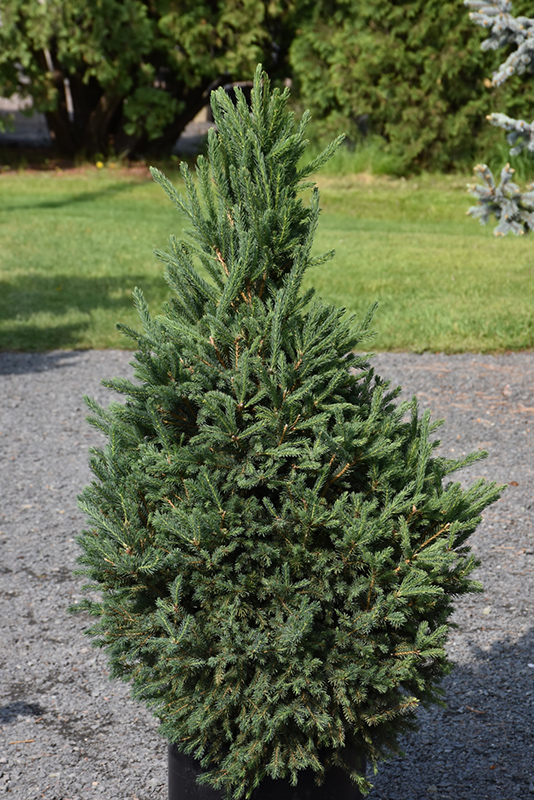Little Dipper White Spruce*
Picea glauca 'Little Dipper'
* This is a "special order" plant - contact store for details
Height: 6 feet
Spread: 4 feet
Sunlight:
![]()
![]()
Hardiness Zone: 3b
Other Names: White Spruce
Brand: Iseli Nursery
Description:
A popular, slow growing evergreen tree with coarse, gray-green foliage on stout, sturdy branches; will mature into a perfect conical shape; great as an accent tree in a formal garden; tolerant of drought and wind
Ornamental Features
Little Dipper White Spruce is a dwarf conifer which is primarily valued in the landscape or garden for its distinctively pyramidal habit of growth. It has attractive grayish green evergreen foliage. The needles are highly ornamental and remain grayish green throughout the winter.
Landscape Attributes
Little Dipper White Spruce is an open multi-stemmed evergreen shrub with a distinctive and refined pyramidal form. Its relatively fine texture sets it apart from other landscape plants with less refined foliage.
This is a relatively low maintenance shrub. When pruning is necessary, it is recommended to only trim back the new growth of the current season, other than to remove any dieback. Deer don't particularly care for this plant and will usually leave it alone in favor of tastier treats. It has no significant negative characteristics.
Little Dipper White Spruce is recommended for the following landscape applications;
- Accent
- General Garden Use
Planting & Growing
Little Dipper White Spruce will grow to be about 6 feet tall at maturity, with a spread of 4 feet. It has a low canopy, and is suitable for planting under power lines. It grows at a slow rate, and under ideal conditions can be expected to live for 50 years or more.
This shrub does best in full sun to partial shade. It prefers to grow in average to moist conditions, and shouldn't be allowed to dry out. It is not particular as to soil type or pH. It is somewhat tolerant of urban pollution, and will benefit from being planted in a relatively sheltered location. This is a selection of a native North American species.
* This is a "special order" plant - contact store for details

